|
The modern Olympic Games have become as much a global
contest among designers and architects as among athletes. Each Olympics
is expected to produce a logo, a signature building - and a
characteristic torch that is symbolizes local tradition and national
character. Below, a design history of the Olympic Torch from 1936 to the
present day.
|
|
Berlin Summer 1936
The first torch relay was staged ahead of the Berlin Games.
Designed by sculptor Walter Lemcke and manufactured by steel and
armaments giant Freidrich Krupp, 3,840 torches were made for 3,331
runners.
Two separate fuses ensured they could re-ignite should the burning point
fall away. They were stainless steel, 27cm long and weighed 450g.
|
|
 |
|
|
|
London Summer 1948
The last time the Olympic Games and a torch relay were held in the UK
was in 1948. That torch was designed by Ralph Lavers, a fan of classical
architecture. He needed to create something inexpensive but well-crafted
for a torch to travel across Europe ahead of the "Austerity Games". Two
types were made - one aluminium, with hexamine/naphthalene tablets
stacked up inside and one for the final stretch in the stadium with a
magnesium flame in a stainless steel holder, to be seen in bright
daylight.
|
|
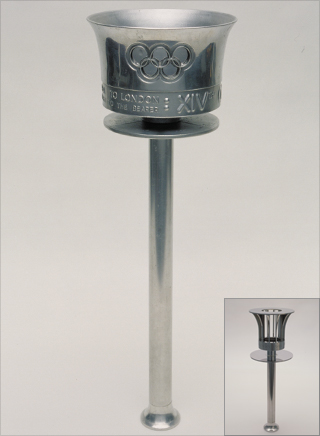 |
|
Helsinki Summer 1952
Only 22 torches were made, rather than a mass production of hundreds.
Instead, there were 1,600 gas canisters made to fuel them. Men ran with
the torch for a 1km stretch, women slightly less. The torches were
passed between runners and swapped for one with a fresh canister after
about 20 minutes.
A 600g silver top rested in a curly birch holder. They were given to
Olympic and sports organisations after the Games.
|
|
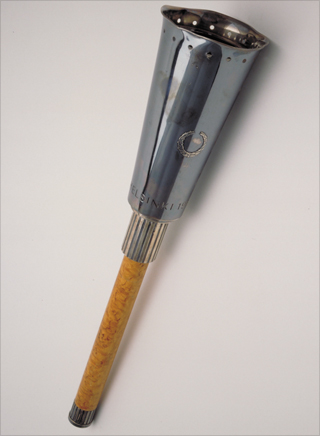
|
|
Melbourne Summer 1956
Ralph Lavers' London design is credited with inspiring the Melbourne
torches. Equestrian events were held in Stockholm so the torch travelled
to Sweden and Australia. Down Under, the torch was diverted around
floods and braved bumpy roads that threatened to extinguish the back-up
miners' lights. The times estimated for runners to complete each mile
varied as it went through the tropics and temperate climes. It reached
Melbourne after being carried 20,470km by 3,118 runners.
|
|

|
|
Rome Summer 1960
The slim, fluted design of the bronzed aluminium 580g torch was based on
those seen on ancient monuments. The relay travelled from Greece,
following the course taken by the ancients when they founded colonies on
Sicily and the Italian peninsular to create Magna Grecia.
|
|
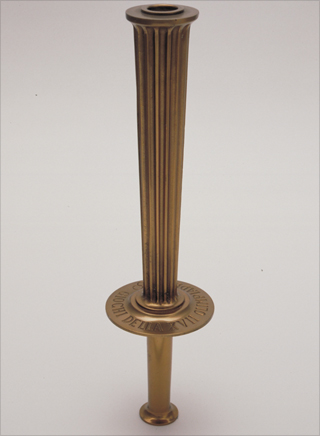
|
|
Tokyo Summer 1964
The torch travelled by air, land and sea from Olympia to Tokyo. In
Japan, the flame split along four routes before reuniting. Yoshinori
Sakai, born in Hiroshima on 6 August, 1945, the day the atomic bomb
dropped, was the final runner and lit the cauldron. When the torch
entered the stadium, chrysanthemum perfume was released from sprayers
under the spectator stands. |
|

|
|
Mexico City Summer 1968
The 3,000 whisk-like torches featured a 3-D Mexico '68 emblem on the
flaming top. The relay followed the route of Christopher Columbus from
Europe to the New World where, for the first time, the cauldron was lit
by a woman, Enriqueta Basileo. The solid fuel mixture was unexpectedly
volatile - some minor explosions occurred and runners were slightly
burned.
|
|
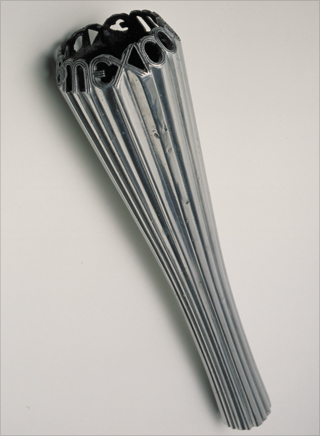 |
|
Munich Summer 1972
Otl Aicher's widely-adopted sporting stickmen were a key design
feature of the Games. The gas torch was made of nickel chromium steel in
three parts - handle, plate and fire pipe screwed together.
It was tested for resilience to extreme weather - including with a
hand-spray to simulate heavy rain.
But not for extreme heat - when temperatures hit 46C en route from
Greece to Germany, special pressurised torches had to be used.
|
|
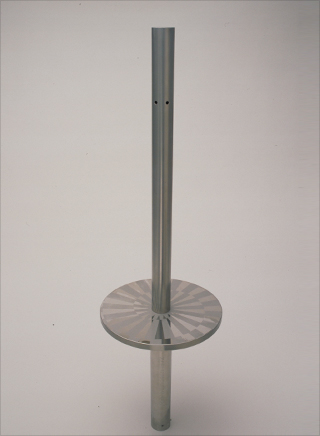
|
|
Montreal Summer 1976
'How will it look on TV?' was a major consideration for Georges Huel and
Michel Dallaire. They designed a red-handled torch with black burner and
a gold and black special presentation edition. The flame was for the
first time carried by a laser beam via satellite from Athens to Ottowa.
But the torch ran on the more-traditional olive oil. On 22 July the
Olympic cauldron went out during a storm and was re-lit from the back-up
flame.
|
|
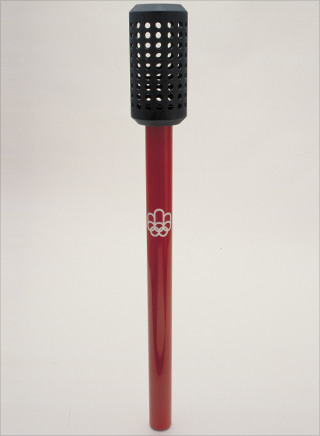
|
|
Moscow Summer 1980
Different again from what had come before, the gold and silver torch had
a cup on top of a burner and the handle was shielded by a protective
screen.
Leningrad enterprises made 6,200 gas torches designed by Boris Tuchin.
It was registered as a state invention of the USSR and given certificate
number 729414.
|
|
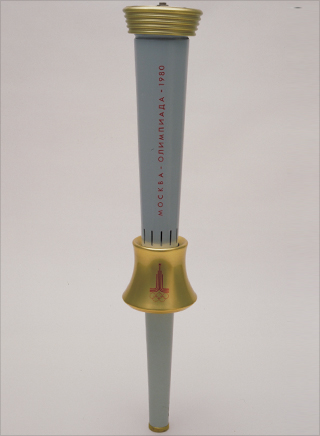 |
|
Los Angeles Summer 1984
The torch was made from spun aluminium with a brass finish and a leather
handle. It featured a picture of the Memorial Coliseum, the venue for
the 1984 and 1932 LA Games.
But the relay was controversial as the US sold the right to run each
kilometre of the relay to runners for $3,000, displeasing the Greeks.
Two hours in to the relay, the USSR announced it would boycott the
Games, in a reversal of the US-led boycott four years earlier. But this
did not stop thousands lining the route of the torch.
|
|
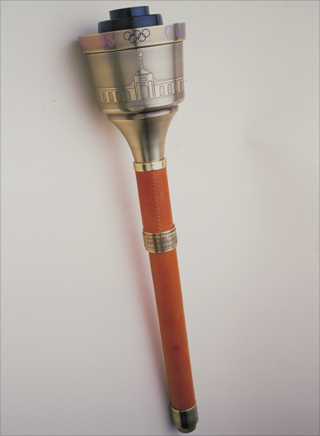 |
|
Seoul Summer 1988
The Korea Explosive Company Ltd made this brass, plastic and
leather-handled torch in a design similar to its immediate predecessors.
Traditional Korean graphics including two dragons symbolised the harmony
of East and West. The torch covered a mammoth 22-day, 4,167.8km route,
through 21 cities, carried by 1,467 torchbearers, with thousands of
assistants and escorts.
|
|
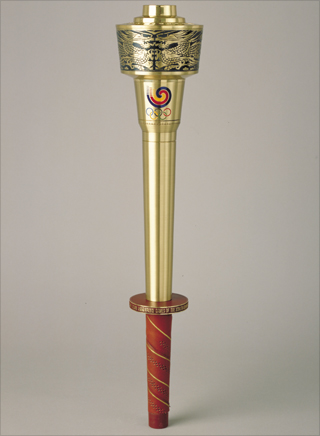 |
|
Barcelona Summer 1992
Andre Ricard, an industrial designer from Barcelona, made a deliberately
different torch that aimed to be "latin" in character. The relay passed
through 652 centres with bicycle relays on the sparsely-populated runs.
The cauldron was lit at Montjuic Olympic stadium by a flaming arrow shot
from the bow of Paralympic archer Antonio Rebollo.
|
|
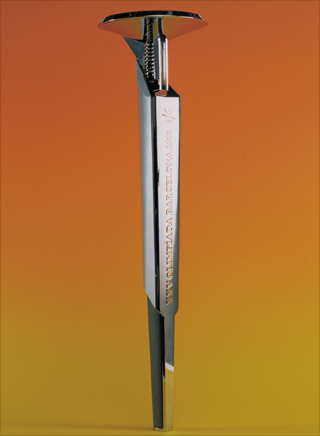 |
|
Atlanta Summer 1996
Malcolm Grear's design of a handful of reeds bound together with twine
was inspired by ancient torches. Twenty-two aluminium reeds represented
each Olympic Games. With a pecan-wood centre handle, it was the longest
summer torch. Modifications were made after some reeds melted, the flame
was hard to see and it went out on the Greek leg of the relay.
|
|
 |
|
Sydney Summer 2000
The Sydney Opera house, a boomerang's curves and Pacific Ocean blue
inspired the design. Its three overlapping components also represent
Earth, fire and water. After a 10-day Greek relay, it showcased
Australia from Uluru to the Great Barrier Reef. Aboriginal sprinter
Cathy Freeman lit the flame in the Olympic Stadium and went on to win
the 400m.
|
|
 |
Athens Summer 2004
Greek industrial designer Andreas Varotsos looked back to the ancient
roots of the Games with a magnesium and wooden torch shaped like an
olive leaf. The torch relay spanned five continents and gave 260m people
the chance to see the flame in their city. The design aimed to have flow
- from the bearer's hand, to the flame, through the torch.
|
|
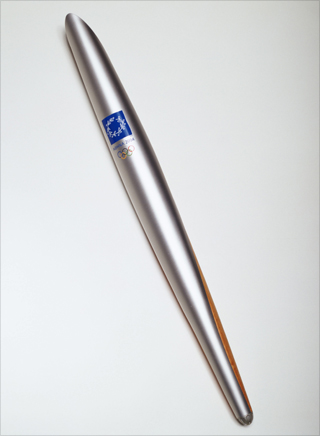 |
|
Beijing Summer 2008
The paper scroll shape of the torch and the "lucky" or "auspicious
cloud" graphics commonly used in Chinese mythology were intended to
portray harmony. And the torch was meant to symbolise a green,
high-tech, people's Olympics. An ambitious, longest-ever torch relay was
run across five continents and China, but it frequently drew protests.
|
|
 |
|
London Summer 2012
With London hosting the Games for a third time, a three-sided torch has
been created by design firm Barber Osgerby. Golden, and made of shaped
sheets of aluminium alloy, each torch is perforated with 8,000 holes
representing the 8,000 torchbearers taking part in the relay. At 80cm it
is one of the tallest torches but also one of the lightest, weighing
800-850g including its central propane-butane burner. Its proportions
will allow it to be carried easily by younger torchbearers.
|
|
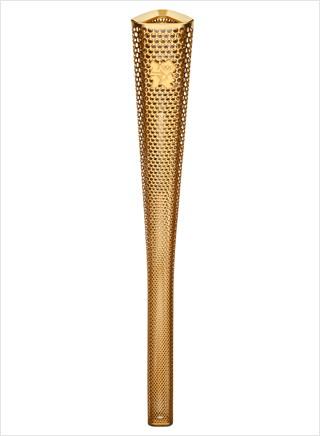 |